African legend: Liya Kebede
The top model is now sharing her heritage through her fashion brand. She tells us why 'Made in Ethiopia' is the future
Liya Kebede will need no introduction to those who love fashion. She’s walked the runways of Paris, Milan and New York, appeared in global campaigns for the likes of Dolce & Gabbana, Louis Vuitton and Yves Saint-Laurent, and she’s described as “a living legend” by the late Virgil Abloh. Now she’s even got her own sustainable fashion label, lemlem, and has done collaborations with both H&M and Moncler.
Despite Kebede’s globetrotting lifestyle, there’s one particular place that remains close to her heart: Ethiopia. It’s the country where she was born and raised, and where she returns for inspiration. We chat to her about her home, travel and launching her own sustainable fashion label.
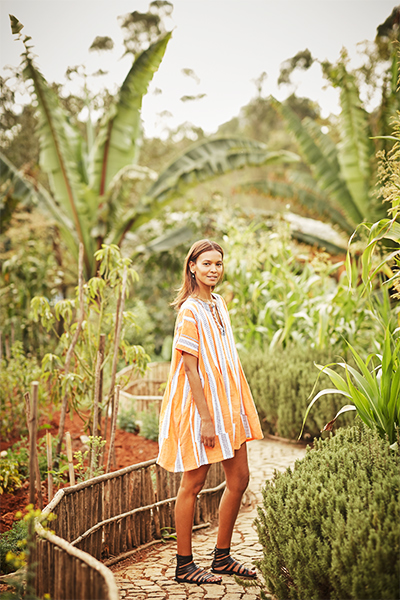
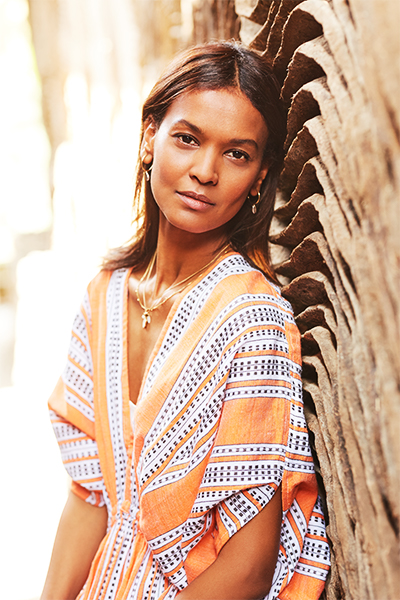
What inspired you to start the lemlem brand and foundation?
I had come home to Addis to see my family and I visited the area where many artisans go to sell their goods. While there, I realised they were in a very difficult situation because there was no longer a market for their products. People had started buying readymade items, and the art of weaving was dying. I wanted to come up with a solution.
I remember being inspired by U2 singer Bono, who had just launched his Red initiative with Gap. The whole idea about wanting to change the image of Africa really stayed with me and shaped the goal: to create something that would employ local people and make products in Africa.
So, I started a line of clothing for which every piece is hand-woven here by local artisans, creating employment opportunities. It’s all Made in Africa and Made in Ethiopia.
In my work as a WHO Goodwill Ambassador, I had seen the challenges of philanthropy, that it’s hard to sustain and you’re always having to look for funds. The idea of making aid sustainable was really the concept behind the birth of lemlem.
Supporting women and maternal health is a big part of your work with the lemlem Foundation. Do you have any other local causes that you are passionate about?
We still do a lot of work on the issue of maternal health, but another thing we’re doing with the foundation is connecting our lemlem customers with our artisans and families in surrounding communities. For example, we’re training a lot of female weavers to bring them into the workforce, empowering them so they can be independent. I believe this is one of the best things you can do for a person.
Why is it important for you to bring traditional prints and fabrics, like the ones created here in Ethiopia, to the global stage in a modern way?
In the fashion world, people get inspired by different things. A designer can go to India or China, for instance, and find inspiration for a whole collection. The difference in this case is that I’m an African, bringing a product made by Africans to the West, while trying to keep its integrity, making people partners, and attempting to inspire other African entrepreneurs to do the same.
Africa is incredible and the craftsmanship across the continent is amazing but it’s interesting that all African countries stay very siloed. If the whole continent would communicate their ideas, we might not need the rest of the world and we could all just work together.
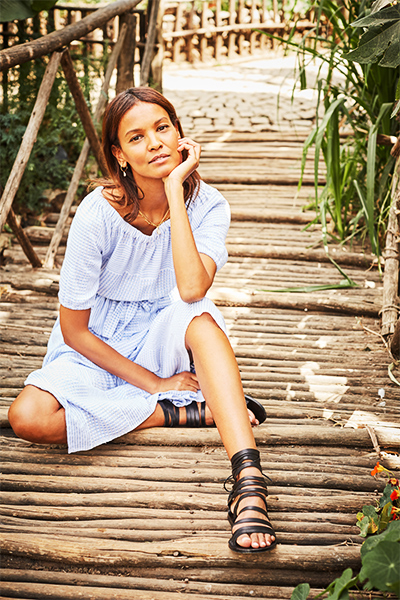
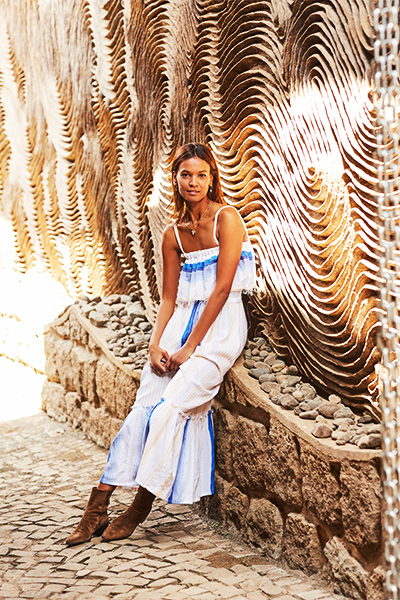
You are very connected to Ethiopia and have spoken about finding inspiration here. What is it about Ethiopia that inspires you?
My family has enabled me to stay connected to Ethiopia. In a way, this has allowed me to give back. I think it’s very interesting how a lot of people who went abroad are now returning to work and do things here. I feel there’s a new trend, not just in Ethiopia but also across Africa, where people are really embracing their cultures, celebrating their own uniqueness, and not always looking to the West. I love seeing kids embracing our music, or wearing traditional clothes and making them cool.
What was growing up in Addis like?
Things were simple. There was so much space everywhere, kids were on the streets playing ball… there was an innocence to it. I was lucky enough to grow up in a middle-income family [Kebede’s father worked for Ethiopian Airlines] and had the opportunity to go to a French school. That was amazing because I was exposed to things like fashion. I started modelling while at high school, doing fashion shows for Ethiopian designers who were trying to make Ethiopian clothes in a modern way.
The story goes that you were discovered here in Addis and taken to Paris and New York. But if you were already modelling in Ethiopia, where did that story come from?
Yes, that’s not my story, it’s the one the press likes to convey. I was already modelling while in high school in Addis, and I have the best memories of that. When I eventually got to Paris and the US, I realised fashion is a business. Before that it was just girls getting together and having a blast, doing make-up for each other and partying afterwards. It was such fun. But then you realise it’s a whole business and there can be a lot of pressure.
Did you feel this pressure once you got to Paris?
It was very competitive and very hard to break into the industry. Being a Black girl was not easy. Things are different now, but back then, no one was interested. In Ethiopia we didn’t grow up with that. We were not colonised, so we didn’t really think about colour. The first time I started to think about being Black or being a person of colour was when I got to Paris, and was the only Black person in some situations. My career only took off after I moved to New York – it was a sort of make-or-break situation. It took a few years, but eventually it worked.
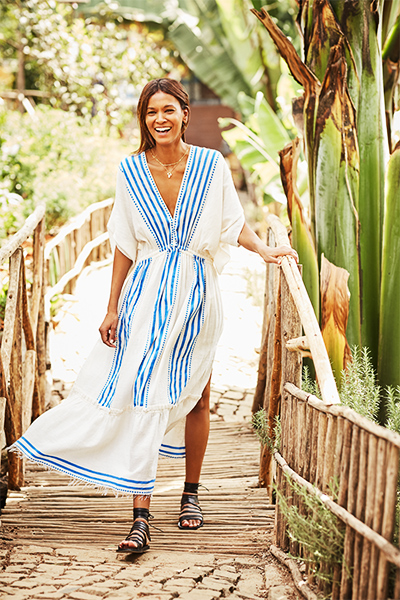
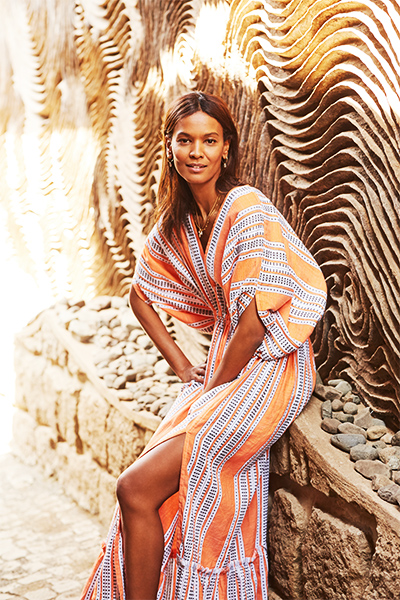
Ethiopia is increasingly becoming a popular tourist destination. What are your favourite places to recommend from a travel perspective?
There are so many more places in Ethiopia that I want to visit, but I’ve spent a lot of time in the north, in Lalibela, which everyone has to see. The journey from there to Gondar is the most incredible drive. It’s like being in the Scottish countryside, with its rolling hills and green scenery. The 16th-century castle is incredible, and the town too. It’s very simple still, centred around a square and surrounded by hills. I went to Bahir Dar to see the Nile, and Harar too, which is insane and exciting and crazy. It has Islamic influences; its market, architecture, and beautifully carved doors make it feel like a Moroccan town. It’s an incredible place.
When it comes to travel, what inspires you?
Travelling as a means to learn about different ways of living. I think that’s the most important thing to me. You see different ways of life in the US, Europe, Africa and in Asia. No life is better than another, and by travelling, you can take a little bit of this and a bit of that, and learn how you want to live.
Travelling also makes you more tolerant because you realise there’s no “other”. That whole fear of the other fades away when you’re in someone else’s country and you see that we all have the same problems and that we are all just trying to do the right thing. I think that if you have the opportunity to travel, it can really help you understand humanity better.
If you could have a coffee with anyone, dead or alive, who would that be and why?
God. Yes, God would be good – I have a lot of questions!
Injera
I love to eat some really good injera bread, and there is no better place to have it than at my parent’s house.
Local craft
I take a lemlem piece wherever I travel, which reminds me of Addis’s incredible weavers.
Entoto forest
When I want to get away from the hustle and bustle, I go to the Entoto forest at sunrise for a run. Magical.
Fendika
I just discovered Fendika on my last trip. It’s a small hole in the wall, traditional but at the same time a super-trendy, super-cool joint where you eat incredible shiro [chickpea stew] and tibs [stir-fry], while listening to some wonderful Ethiopian jazz.
Enrico’s
My go-to place in Addis for a sweet treat and a great macchiato is Enrico’s pastry shop. It’s on an ordinary, busy street near Piassa old town. I love their Italian cakes with layers of puff pastry and sweet, creamy custard.